India's population has reached 1,425,775,850 people, surpassing the number of people in mainland China, according to the UN's estimates.
India's decennial census - scheduled to be held in 2021 - has been delayed, so there's no official population data. China's most recent - and seventh census - was conducted in 2020.
To estimate and project populations of both India and China, the UN relies on information about levels and trends in fertility, mortality and migration acquired from records, surveys and administrative data.
What is clear is that both India and China have more than 1.4 billion people each, and for over 70 years have accounted for more than a third of the global population.
China's population is likely to begin shrinking next year. Last year, 10.6 million people were born, a little more than the number of deaths, thanks to a rapid drop in fertility rate. According to the UN, the Chinese population will continue to fall and could drop to below a billion before the end of the century.
India's fertility rate has also fallen substantially in recent decades - from 5.7 births per woman in 1950 to two births per woman today - but the rate of decline has been slower. India's population is virtually certain to continue to grow for several decades - the UN expects the population to peak around 2064, and then decline gradually.
So what does India overtaking China as the most populous country in the world mean?
China reduced its population faster than India
China reduced its population growth rate by about half from 2% in 1973 to 1.1% in 1983.
Demographers say much of this was achieved by riding roughshod over human rights - two separate campaigns promoting just one child and then later marriages, longer gaps between children and fewer of them - in what was a predominantly rural and overwhelmingly uneducated and poor country.
Investments in public health and increased education for women and their participation in the workforce, among other things, also contributed to the decline in fertility.
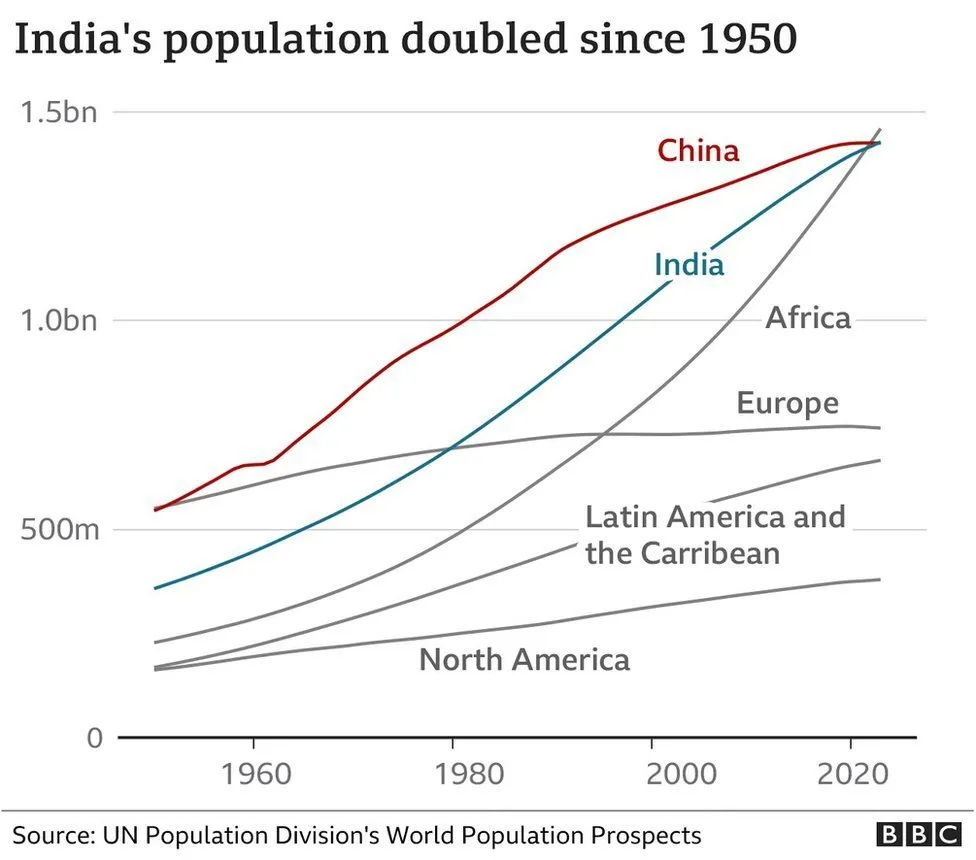
India's population more than trebled in the six decades after independence - from 361 million people in 1951 to more than 1.2 billion in 2011.
India saw rapid population growth - almost 2% annually - for much of the second half of the last century. Over time, death rates fell, life expectancy rose and incomes went up. More people - especially those living in cities - accessed clean drinking water and modern sewerage. "Yet the birth rate remained high," says Tim Dyson, a demographer at the London School of Economics.
India launched a family planning programme in 1952 and laid out a national population policy for the first time only in 1976, about the time China was busy reducing its birth rate.
But forced sterilisations of millions of poor people in an overzealous family planning programme during the 1975 Emergency - when civil liberties were suspended - led to a social backlash against family planning. "Fertility decline would have been faster for India if the Emergency hadn't happened and if politicians had been more proactive. It also meant that all subsequent governments treaded cautiously when it came to family planning," Prof Dyson says.
East Asian countries such as South Korea, Malaysia, Taiwan and Thailand, which launched population programmes much later than India, achieved lower fertility levels, cut infant and maternal mortality rates, raised incomes and improved human development earlier than India.
India no longer fears a population explosion
India has added more than a billion people since independence in 1947, and its population is expected to grow for another 40 years.
But its population growth rate has been declining for decades now, and the country has defied dire predictions about a "demographic disaster".
So India having more people than China is no longer significant in a "concerning" way, say demographers.
Rising incomes and improved access to health and education have helped Indian women have fewer children than before, effectively flattening the growth curve.
Fertility rates have dipped below replacement levels - two births per woman - in 17 out of 22 states and federally administered territories. (A replacement level is one at which new births are sufficient to maintain a steady population.)
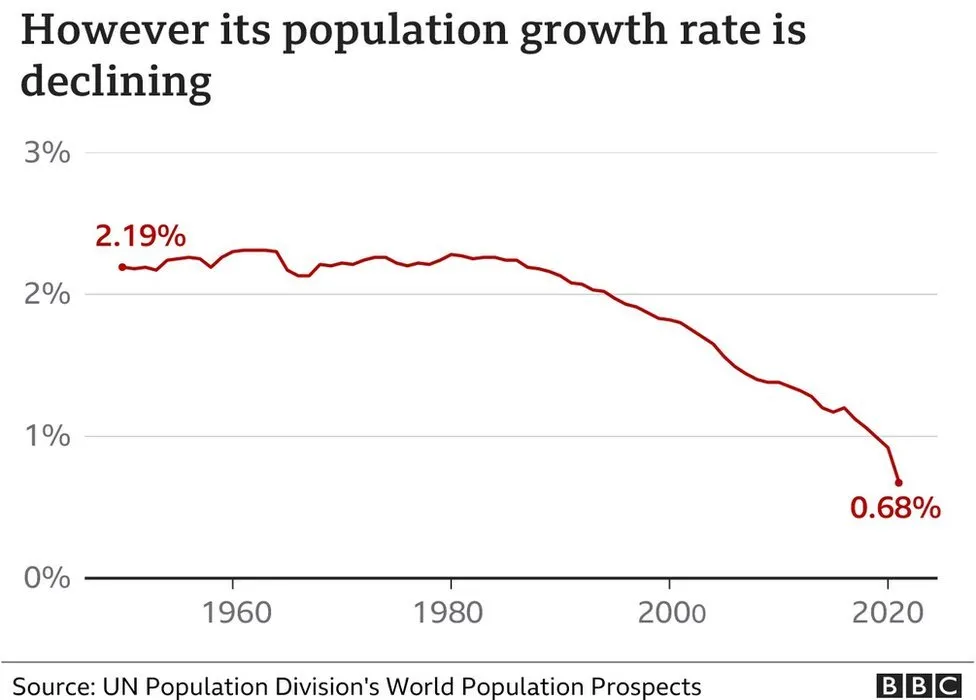
According to Pew Research Center, all religious groups in India have shown major declines in fertility rates, based on data available in India's decennial census and the National Family Health Survey (NFHS).
As a result there have been only "modest changes" in the religious make-up of the people since 1951.
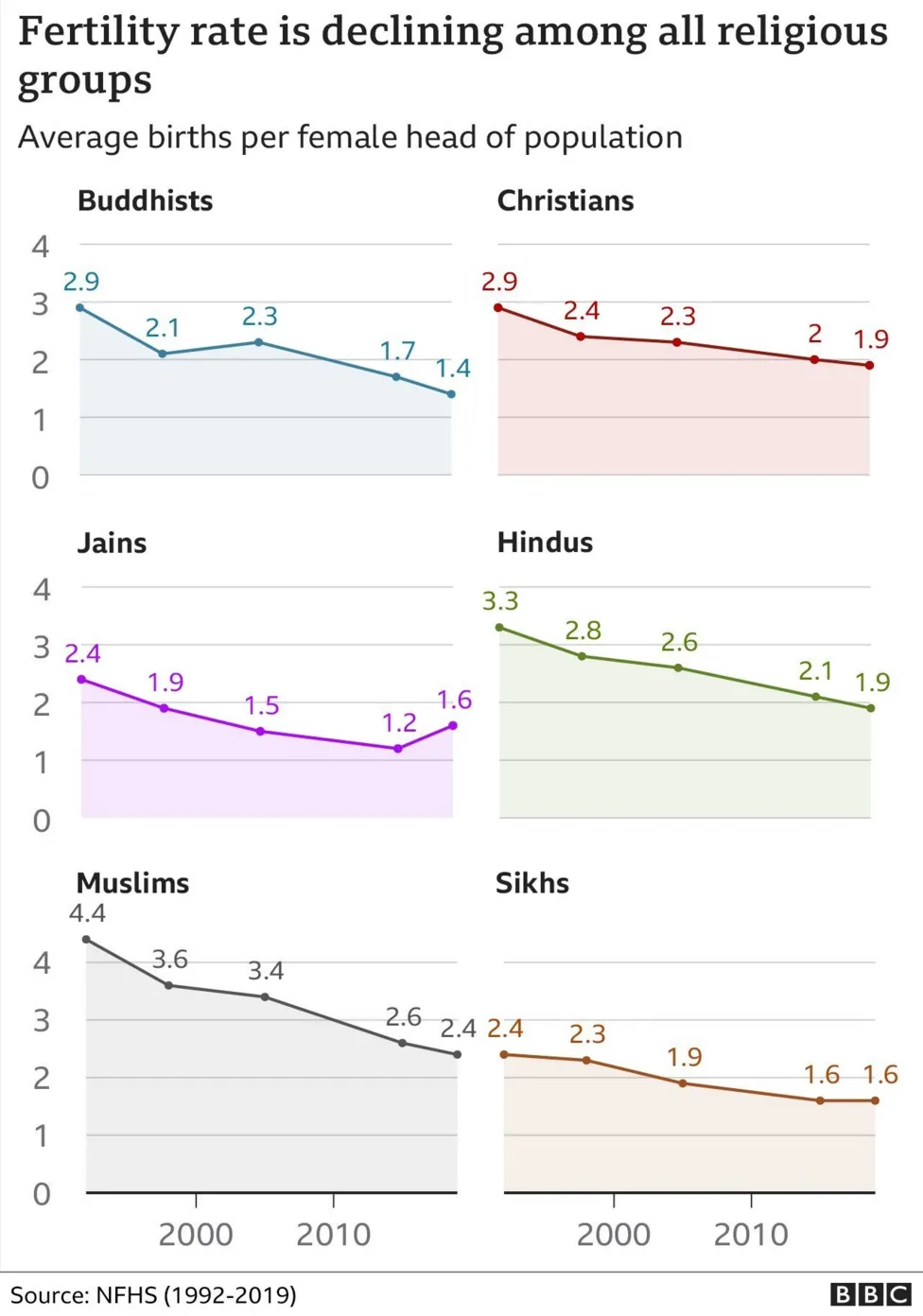
Fertility rates among all religious groups have declined, according to official data.
The decline in birth rates has been faster in southern India than in the more populous north. "It is a pity that more of India could not have been like south India," says Prof Dyson. "All things being equal, rapid population growth in parts of north India have depressed living standards".
However, overtaking China could be significant
It could, for example, strengthen India's claim to a permanent seat in the UN Security Council, which has five permanent members, including China.
India is a founding member of the UN and has always insisted that its claim to a permanent seat is just. "I think you have certain claims on things [by being the country with largest population]," says John Wilmoth, director of the Population Division of the UN Department of Economic and Social Affairs.
The way India's demography is changing is also significant, according to KS James, director of the Mumbai-based International Institute for Population Sciences.

Despite drawbacks, India deserves some credit for managing a "healthy demographic transition", by using family planning in a democracy which was both poor and largely uneducated, says Prof James. "Most countries did this after they had achieved higher literacy and living standards."
More good news: one in five people below 25 years in the world is from India and 47% of Indians are below the age of 25. Two-thirds of Indians were born after India liberalised its economy in the early 1990s.
This group of young Indians have some unique characteristics, says Shruti Rajagopalan, an economist, in a new paper. "This generation of young Indians will be the largest consumer and labour source in the knowledge and network goods economy. Indians will be the largest pool of global talent," she says.
But there are serious challenges
India needs to create enough jobs for its young working age population to reap a demographic dividend. Only 40% of India's working-age population works or wants to work, according to the Centre for Monitoring Indian Economy (CMIE).
More women would need jobs as they spend less time in their working age giving birth and looking after children. The picture here is bleaker - only 10% of working-age women were participating in the labour force in October, according to CMIE, compared with 69% in China.
Then there's migration. Some 200 million Indians have migrated within the country - between states and districts - and their numbers are bound to grow. Most are workers who leave villages for cities to find work.
"Our cities will grow as migration increases because of lack of jobs and low wages in villages. Can they provide migrants a reasonable living standard? Otherwise, we will end up with more slums and disease," says S Irudaya Rajan, a migration expert at Kerala's International Institute of Migration and Development.
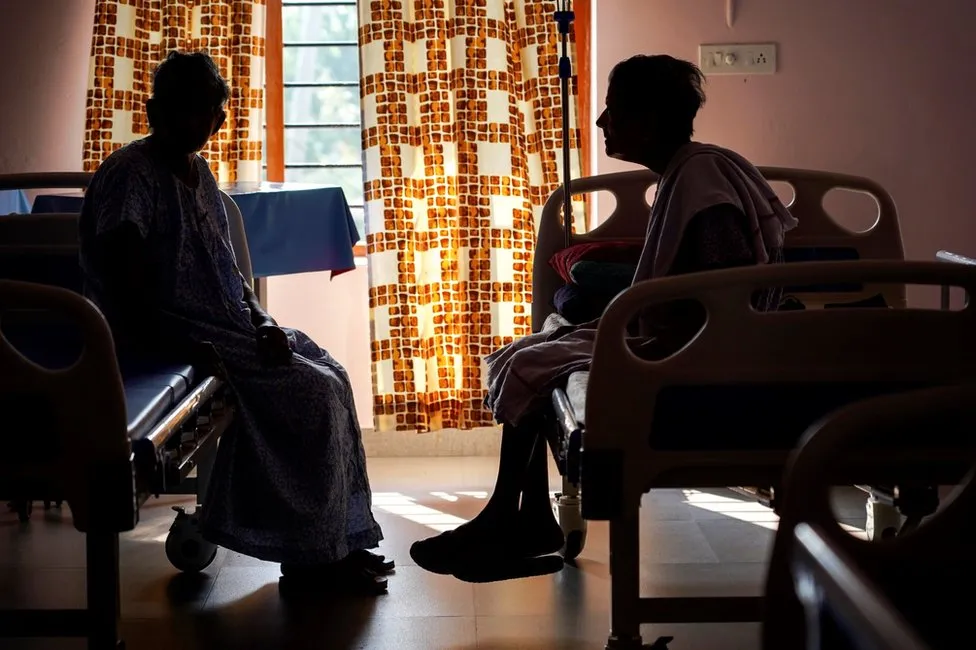
Demographers say India also needs to stop child marriages, prevent early marriages and properly register births and deaths. A skewed sex ratio at birth - meaning more boys are born than girls - remains a worry.
Political rhetoric about "population control" appears to be targeted at Muslims, the country's largest minority when, in reality, "gaps in childbearing between India's religious groups are generally much smaller than they used to be", according to a study from Pew Research Center.
Ageing deserves more attention
Demographers say the ageing of India receives little attention.
In 1947, India's median age was 21. A paltry 5% of people were above the age of 60.
Today, the median age is over 28, and more than 10% of Indians are over 60 years. Southern states such as Kerala and Tamil Nadu achieved replacement levels at least 20 years ago.
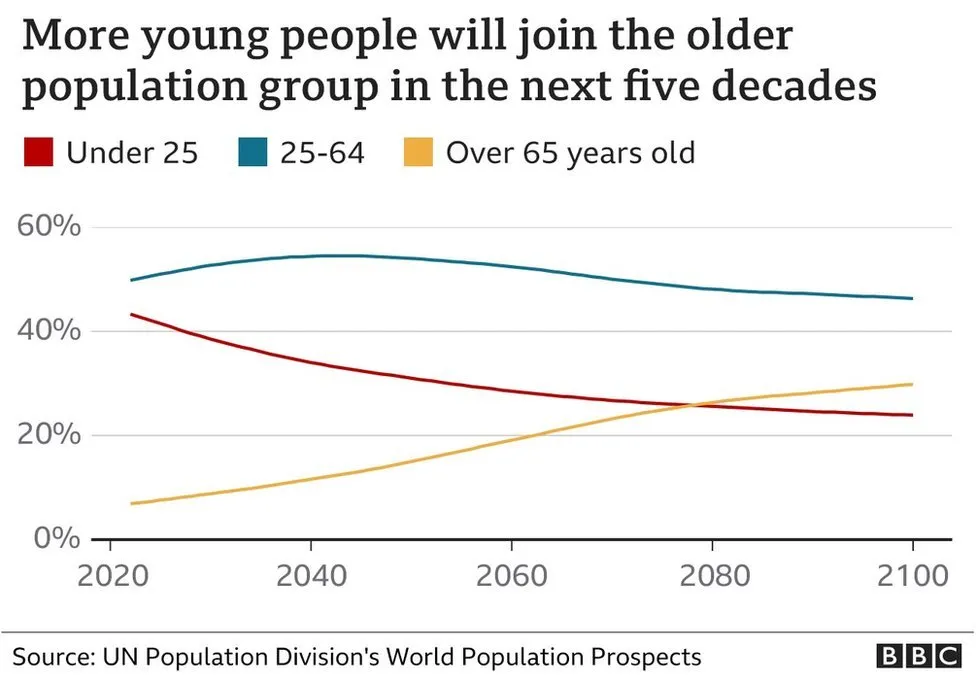
In Kerala, for example, the rise in population between 2001 and 2011 was lowest (4.9%) among states. A newborn in the state can expect to live for 75 years, against the national average of 69. Smaller families here ensure that children are educated well. This leads to the young migrating quickly within and outside the country for opportunities, leaving their parents at home.
The UN estimates that between 2023 and 2050, the number of people aged 65 and above is expected to nearly double in China, and to more than double in India, "posing significant challenges to the capacity of healthcare and social insurance systems".
"As the working-age population declines, supporting an older population will become a growing burden on the government's resources," says Rukmini S, author of Whole Numbers and Half Truths: What Data Can and Cannot Tell Us About Modern India.
"Family structures will have to be recast and elderly persons living alone will become an increasing source of concern," she says.
Charts by Shadab Nazmi
- alf9872000
-

 1
1



Recommended Comments
There are no comments to display.
Join the conversation
You can post now and register later. If you have an account, sign in now to post with your account.
Note: Your post will require moderator approval before it will be visible.